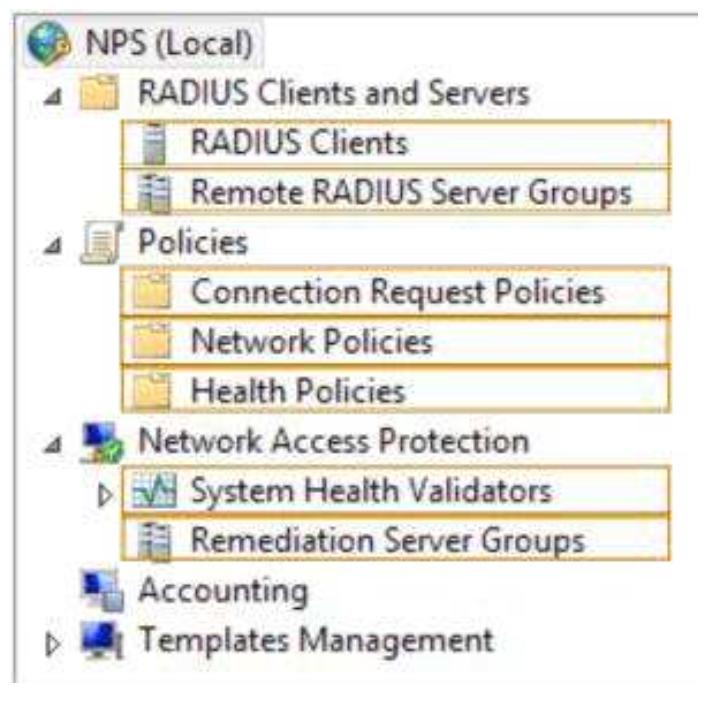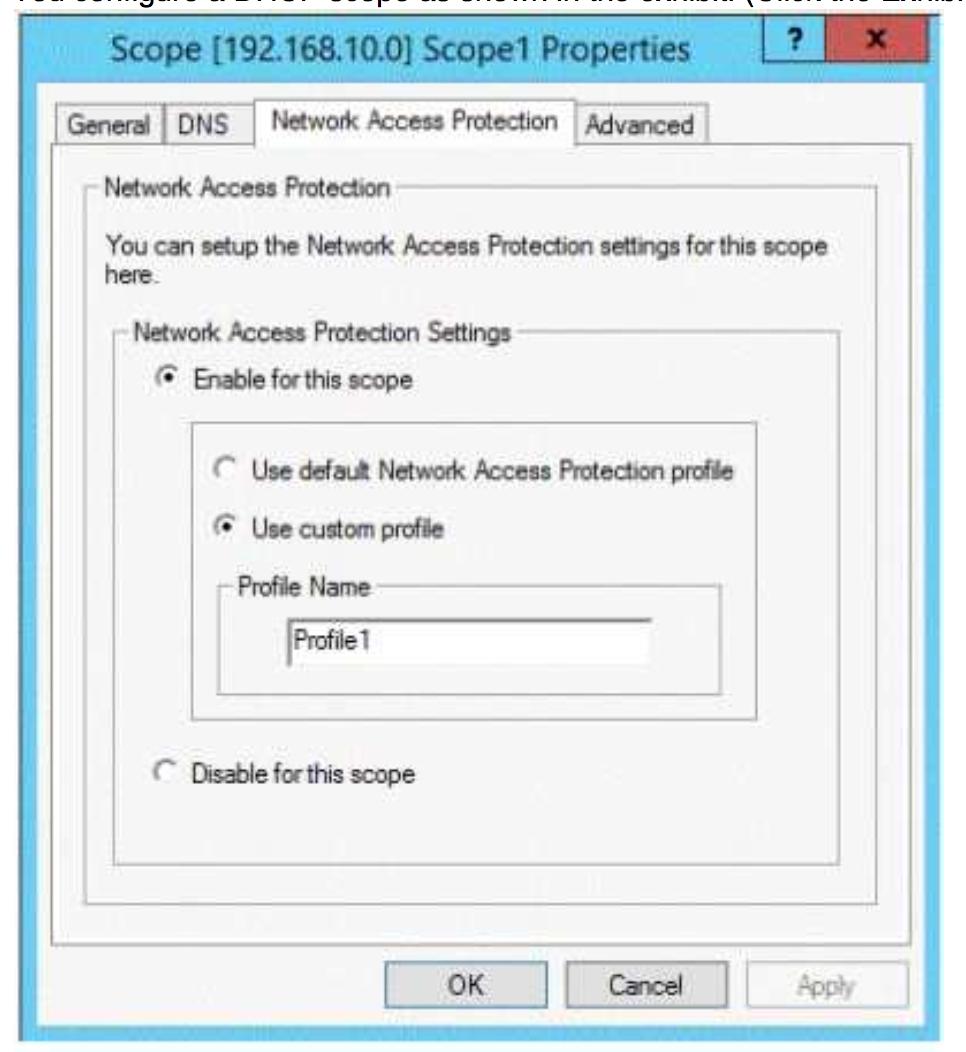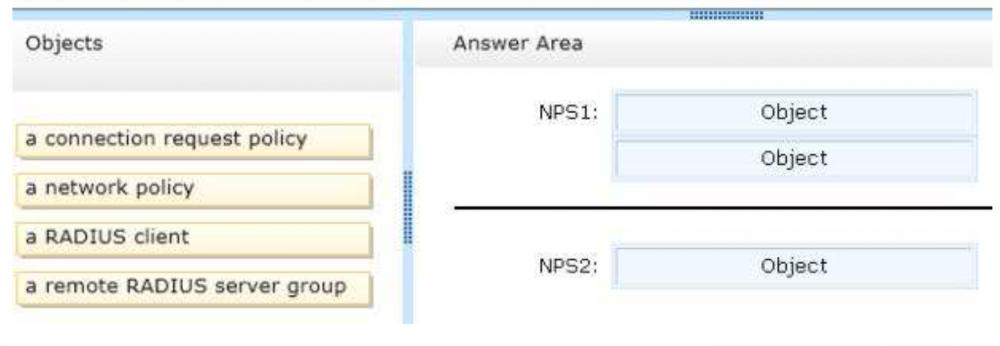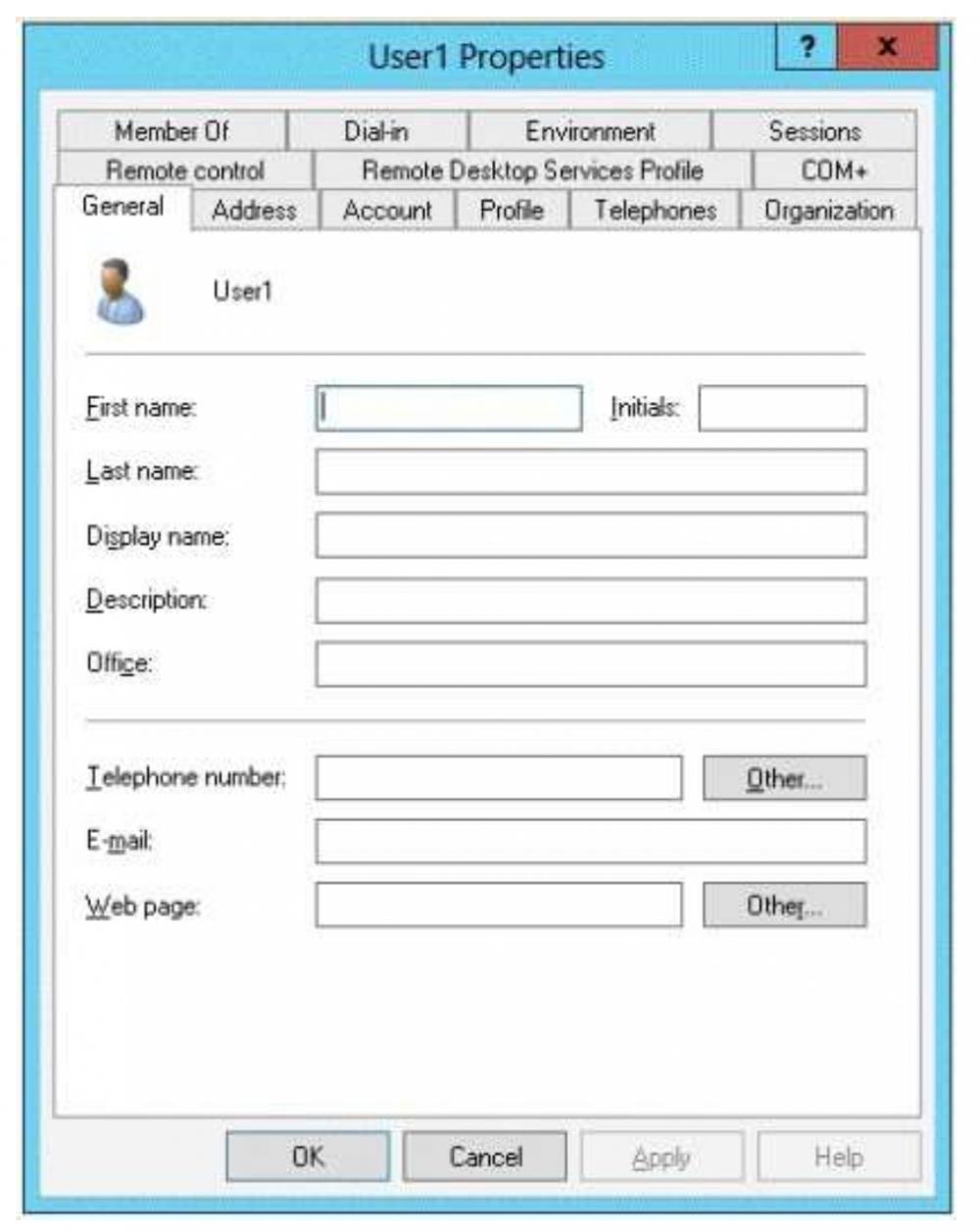Strona 2
Windows Serwer 2012 R2 70-411
Pytanie 9
Your network contains an Active Directory domain named contoso.com.
You have several Windows PowerShell scripts that execute when client computers start.
When a client computer starts, you discover that it takes a long time before users are prompted to
log on.
You need to reduceExplanation:
Lets the system run startup scripts simultaneously rather than waiting for each to finish
http : //technet. microsoft. com/en-us/library/cc939423 . aspx
Directs the system to wait for logon scripts to finish running before it starts the Windows
Explorer interface program and creates the desktop.
It you enable this policy, Windows Explorer does not start until the logon scripts have finished
running. This setting assures that logon script processing is complete before the user starts
working, but it can delay the appearance of the desktop.
It you disable this policy or do not configure it, the logon scripts and Windows Explorer are not
synchronized and can run simultaneously.
This policy appears in the Computer Configuration and User Configuration folders. The policy
set in Computer Configuration takes precedence over the policy set in User Configuration.
By default, the Fast Logon Optimization feature is set for both domain and workgroup members.
This setting causes policy to be applied asynchronously when the computer starts and the user
logs on. The result is similar to a background refresh. The advantage is that it can reduce the
amount of time it takes for the logon dialog box to appear and the amount of time it takes for the
desktop to become available to the user. Of course, it also means that the user may log on and
start working before the absolute latest policy settings have been applied to the system.
Depending on your environment, you may want to disable Fast Logon Optimization. You can do
this with Group Policy, using the Always wait for the network at computer startup and logon
policy setting. the amount of time it takes for the client computers to start. The solution
must not prevent scripts from completing successfully.
Which setting should you configure?
To answer, select the appropriate setting in the answer area.
Hot Area.
Ryn windows powershell scripts first at computer startup
Run logon scripts synchronously
Display instructions in stratup scripts as they run
allow logon scripts when NetBIOS or WINS is disabled
Specyfy maximum wait time for Group Policy scripts
Run startup scripts asynchronously

Pytanie 10
Your network contains an Active Directory domain named contoso.com. All domain controllers run Windows Server 2012 R2.
The domain contains an organizational unit (OU) named 0U1. 0U1 contains an OU named 0U2. 0U2 contains a user named user1.
User1 is the member ot a group named Group1. Group1 is in the Users container.
You create five Group Policy objects (GPO). The GPOs are configured as shown in the
following table.
The Authenticated Users group is assigned the default permissions to all ot the GPOs.
There are no site-level GPOs.
You need to identify which three GPOs will be applied to User1 and in which order the GPOs
will be applied to User1.
Which three GPOs should you identify in sequence?
To answer, move the appropriate three GPOs from the list ot GPOs to the answer area and arrange them in the correct order.
GPO4
GPO3
GPO5
GPO1
GPO2

Pytanie 11
Your network contains a RADIUS server named Server1.
You install a new server named Server2 that runs Windows Server 2012 R2 and has Network
Policy Server (NPS) installed.
You need to ensure that all accounting requests for Server2 are forwarded to Server1.
On Server2, you configure a Connection Request Policy.
What else should you configure on Server2?
To answer, select the appropriate node in the answer area.
Connection Request Policies
Remote RADIUS Server Groups
Health Polices
Network Polices
Radius Clients

Pytanie 12
Your network contains an Active Directory domain named contoso.com. The domain contains
two servers named Server1 and Server2.
Server1 has the Network Policy Server server role
installed. Server2 has the DHCP Server server role installed. Both servers run Windows Server
2012 R2.
You are configuring Network Access Protection (NAP) to use DHCP enforcement.
You configure a DHCP scope as shown in the exhibit. (Click the Exhibit button.)
You need to ensure that non-compliant NAP clients receive different DHCP options than
compliant NAP clients.
What should you configure on each server?
To answer, select the appropriate options for each server in the answer area
Ms-Service class
Server1
Health Polices
Server2
Server options
Service-Type
a policy
a Vendor class
filters
Identity-Type
a User class

Pytanie 13
Your network contains an Active Directory domain named contoso.com. The domain contains the users shown in the following table.
User1, User2, and User3 plan to connect to the network by using a VPN. You need to identify which network policy will apply to each user.
What should you identify?
To answer, select the appropriate policy for each user in the answer area
Wpisz 1-3

Pytanie 14
Your network contains an Active Directory forest named contoso.com. The forest contains a Network Policy
Server (NPS) server named NPS1 and a VPN server named VPN1. VPN1 forwards all authentication
requests to NPS1.
A partner company has an Active Directory forest named adatum.com. The adatum.com forest contains an
NPS server named NPS2.
You plan to grant users from adatum.com VPN access to your network.
You need to authenticate the users from adatum.com on VPN1.
What should you create on each NPS server?
To answer, drag the appropriate objects to the correct NPS servers. Each object may be used once, more than once, or not at all. You may need to drag the split bar between panes or scroll to view content.
Select and Place:
NPS1
a connection request policy
NPS1
a remote RADIUS server group
NPS2
a RADIUS client
Nie potrzebne
a network policy

Pytanie 15
Your network contains an Active Directory forest named contoso.com. The forest functional level is Windows Server 2012 R2. The forest contains a single domain.
You create a Password Settings object (PSO) named PSO1.
You need to delegate the rights to apply PSO1 to the Active Directory objects in an organizational unit named OU1.
What should you do?
From Group Policy Management, create a Group Policy object (GPO) and link the GPO to OU1
From Active Directory Users and Computers, run the Delegation of Control Wizard
From Active Directory Administrative Center, modify the security settings of OU1
From Active Directory Administrative Center, modify the security settings of PSO1
Pytanie 16
Your network contains an Active Directory domain named contoso.com.
You create a user account named User1. The properties of User1 are shown in the exhibit. (Click the Exhibit button.)
You plan to use the User1 account as a service account. The service will forward authentication requests to other servers.
You need to ensure that you can view the Delegation tab from the properties of the User1 account.
What should you do first?
Modify the Security settings of User1
Configure the Name Mappings of User1
Modify the user principal name (UPN) of User1
Configure a Service Principal Name (SPN) for User1

